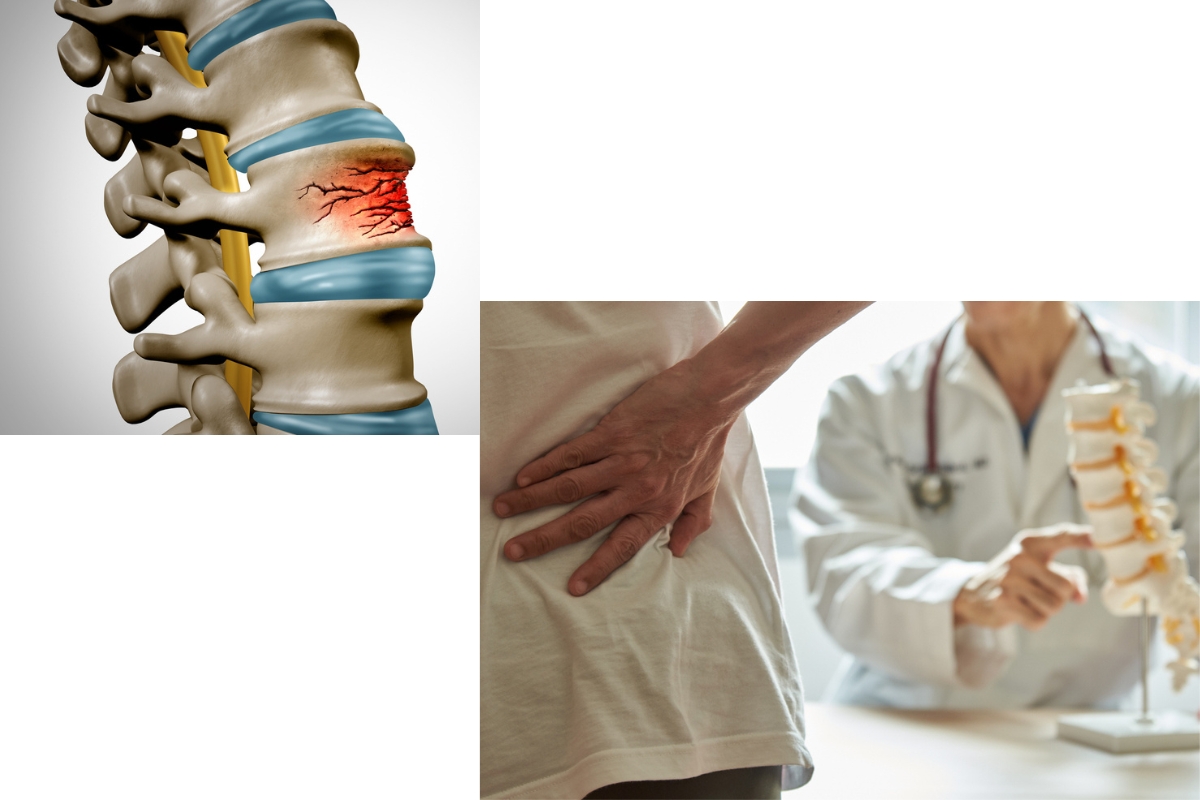Fractured Spine Recovery in Daytona Beach, FL
Reduce Pain and Recover Mobility After Spinal Fracture
A Vertebral Compression Fracture (VCF) is a break or collapse in a vertebra, one of the bones in the spine, often due to conditions like osteoporosis or cancer. To restore spinal stability, improve posture, and reduce pain after a VCF, many patients choose Kyphoplasty, a minimally invasive and outpatient procedure.

Common Symptoms of VCF
A VCF can cause the vertebrae to lose height, restrict movement, and prevent proper posture. This can further lead to symptoms including:
- Sudden or severe pain in the middle or lower back
- Worsening pain with movement or activity
- Stiffness, pain, and decreased mobility when performing daily tasks
- Loss of height or curved spine
- Radiating pain, tingling, or numbness in the legs
Advantages of Kyphoplasty
Interventional Specialists of Florida provides advanced spinal fracture treatment using minimally invasive techniques to reduce pain and restore mobility. Our expert team focuses on personalized care, helping patients recover safely and effectively. Kyphoplasty is an outpatient procedure that involves the insertion of a small needle into the fractured vertebra through which a small balloon will be placed. The balloon is then gently inflated to lift the collapsed bone and restore its height. After this, a special bone cement is injected to stabilize the fractured vertebra and to prevent further collapse. Benefits include:
Pain Relief
As many as 90% of patients experience significant pain reduction within days of the procedure, and, without surgery, patients frequently require fewer pain medications.
Improved Mobility
By stabilizing the fractured vertebra and restoring its height, kyphoplasty can also help reduce spinal deformity, improve posture, and alleviate pressure on surrounding nerves. Restoring vertebral stability makes it easier to move and perform daily activities
Better Posture
By restoring height to the vertebra, kyphoplasty can help reduce spinal deformity and improve alignment
Quick Recovery
Kyphoplasty offers several benefits including significant pain relief for most patients, often within days of the procedure, and improved mobility which gets patients back to their lives sooner.
FAQs
While kyphoplasty is effective for many patients, it is most beneficial when performed within 6 weeks of the fracture. Delayed treatment can reduce its effectiveness.
Surgical options are typically reserved for severe cases when the spine is unstable or when there is significant nerve or spinal cord compression. Surgical interventions include spinal fusion, decompressive laminectomy, vertebral body resection with implant reconstruction.
Compared to non-surgical treatments, kyphoplasty results in faster pain relief and better quality of life for patients with severe symptoms. Typical alternative treatments for a vertebral fracture include conservative management which involves pain relievers, back bracing for support, and stability and physical therapy to strengthen surrounding muscles and improve strength and mobility.